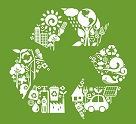 Article details how HP and Kyocera are applying methods to improve sustainability and reuse of products.
Article details how HP and Kyocera are applying methods to improve sustainability and reuse of products.
An article on The Guardian highlights how printer manufacturers are “innovating” when it comes to making their products more sustainable and in-line with a circular economy, with 75 percent of HP’s inkjet cartridges utilising closed-loop technology through “upcycling plastic from returned HP cartridges” along with materials from other waste such as “plastic bottles and clothes hangers”.
Meanwhile, 24 percent of HP’s LaserJet toner cartridges also feature recycled content, despite this being more challenging due to the complexity of the materials they use. By using recycled materials to manufacture cartridges, HP has reportedly “reduced its carbon footprint by 33 percent, fossil fuel consumption by 54 percent and water usage by 75 percent”.
Another area in which HP reportedly plans to invest is “design through disassembly” in order to create “a cleaner stream of material and boost recovery levels of PET plastic by 50 percent”; with Bruno Zago, UK Sustainability Manager for HP, explaining: “At the moment we are using [design for disassembly] for one cartridge type that has a print head integrated within it […] we want to build in more disassembly going forward and develop similar processes for the newer types of cartridges we are developing.”
The article notes that the OEM’s efforts to adopt circular economy principles rely on the number of used cartridges that are returned through its Planet Partners scheme, adding that “increasing participation rates, particularly among consumers, remains an ongoing struggle”, with many OEMs reluctant “to disclose what percentages of cartridges sold get returned”.
Kyocera meanwhile has applied design for disassembly techniques to its printers, redesigning its laser printers so they are “cartridge free” by changing the drum material and “downsizing the number of component parts in the printer” from 70 to five. The company states that this reduces its carbon footprint by 55 percent, waste by 85 percent and costs by 54 percent per printer.
The OEM’s printers are able to be taken apart using a single screwdriver and use more “clip together” components rather than metal fixings. Plastic parts meanwhile are “embossed with a material code” to make it easy to identify the correct recycling process, along with “a symbol to indicate the point where pressure may be applied to separate them”.
The company is however facing issues regarding “legislative barriers during the end-of-life phase, with Tracey Rawling Church, Head of CSR at Kyocera Document Solutions UK explaining that under the current WEEE regulations, “targets are set according to the volume of waste collected and processed, not the value of materials recovered”.
Rawling Church said: “Because the vast majority of e-waste is not designed for disassembly, and there is no labelling scheme to enable products designed for disassembly to be easily identified, anything put through the WEEE compliance process by our customers is most likely to be shredded […] the co-mingling of different types of plastic means that it’s very difficult to recover virgin-quality recyclate from a shredder so the value of the materials that emerge from WEEE compliance is degraded.”
